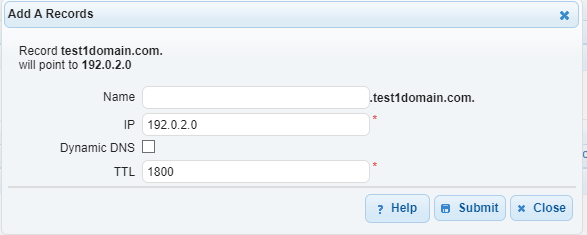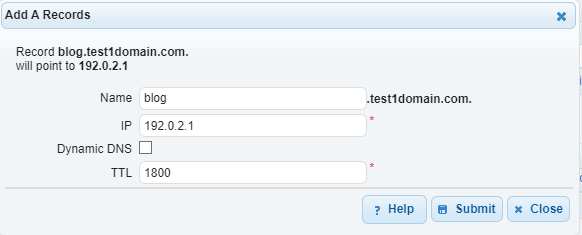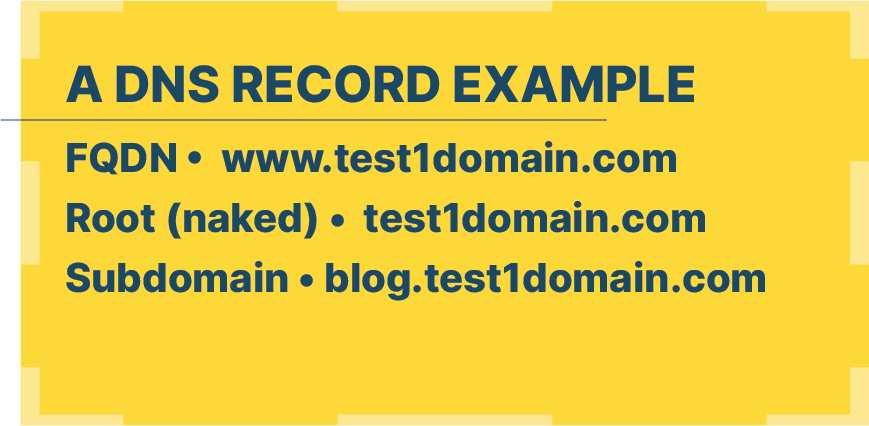The Domain Name System (DNS) is the technology running behind the scenes that allows machines to talk to one another. Without it, the way we use the Internet today wouldn’t be possible. A key component of this technology is DNS records. These records provide devices with the instructions they need to answer an internet user’s request. In this blog, I’ll be covering the A record, which is the most widely used and most important record type.
A Records: What Are They and What Do They Do?
An A record is what is used to map fully qualified domain names (FQDNs) to their corresponding IP addresses. In this case, the address is a 32-bit IPv4 address, which represents version four of the Internet protocol and is the current standard used by most devices. Anytime someone searches for a website, a DNS lookup is initiated. The user’s query is forwarded to a series of DNS servers that work together to find the location of the website in question.
Tip: Want to learn more about how DNS works? Watch our video DNS Explained, which breaks it down into simple, easy-to-understand terms.
Without an A record, these servers wouldn’t be able to discover the true address of the domain name. This is because domain names like dnsmadeeasy.com or google.com, etc., are just that—names. And these names are only helpful for humans. For DNS servers to know where to send a user, they need the numerical IP address, which is why queries are ultimately resolved according to the domain’s A record.
Did you know?: We’re almost out of IPv4 addresses, which is where AAAA records come in. They function the same as A records but utilize 128-bit IPv6 addresses. Currently, they coexist, but eventually, IPv6 will replace IPv4 entirely.
A Records at the Root and Subdomains
Records can be pointed at the root of a domain or to a subdomain. An A record is needed at the root to ensure the domain is resolvable and to prevent resolution errors. When pointed at a subdomain, an A record simply points the subdomain to the server where its content is hosted.
When pointing to the root or “naked” domain, the name field of an A record is either blank or contains the @ symbol, depending on your DNS provider. Here’s an example of what an A record mapped to the root looks like in DNS Made Easy:

An A record pointed to a subdomain looks like this:

In the above examples, we have one A record pointing to the root (designated by the blank name field) and another pointing to a subdomain. To help visualize the difference, let’s look at an FQDN, a root domain, and a subdomain in text format:

Structure of an A record
A (host) Points to (IPv4 address) TTL (Time to Live)
@ (root) → 192.0.2.0 300
news (subdomain) → 192.0.2.1 300
A Records Wrap-Up
The purpose of an A record is to tell DNS servers where the physical IP address of a domain or subdomain is located. A Records can map to the root of a domain or a subdomain. You can also have multiple A records for the same domain that point to different IP addresses at the root or subdomain level. This is a common load-balancing technique called Round Robin. In short, the A record is a critical part of DNS. Without the information specified in an A record, servers would be unable to find your domain.
Reliable A Record Management with DNS Made Easy
DNS Made Easy gives you the control, speed, and reliability needed to manage A Records with precision. Whether you’re pointing to a root domain or subdomain, our intuitive interface and advanced DNS infrastructure ensure fast propagation, high availability, and minimal downtime. With features like Round Robin load balancing, real-time analytics, and built-in redundancy, DNS Made Easy helps you maintain peak performance and resilience at every domain configuration level.
